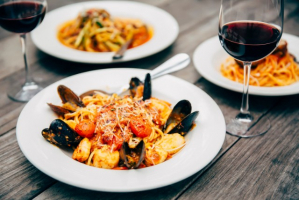Top 12 Most Famous Indian Dining Etiquettes
You should expect to have a wonderful experience as a guest in an Indian home because hospitality is the defining quality of an Indian host. Here are the most ... read more...famous Indian dining etiquettes to take into account when you attend an Indian meal, however, there are many other ways to be a courteous guest.
-
In India, the customary method of eating is to pick up food with your hands. When eating with your hands, the optimum technique is to link all of your fingers together and pick up food with only the tips of your fingers. This is supposed to improve our awareness of the flavor of food in India.
Eating with your hands also directs your attention to the meal in front of you, allowing you to concentrate on temperature, portion sizes, and technique.
However, not all Indian meals should be eaten with the hands. Spoons can be used if the food is soupy, as in many dals. It is permissible to use flatbreads such as chapati, roti, or naan to gather food and sop up gravies and curries when they are offered with the meal. Allowing your palms or the outsides of your fingers to become soiled is considered impolite.
Although many Indians eat with their hands, forks and knives are commonly used by the middle and upper castes. It's also quite acceptable for a foreigner to request silverware in more formal settings, such as a restaurant, if it makes you feel more at ease.
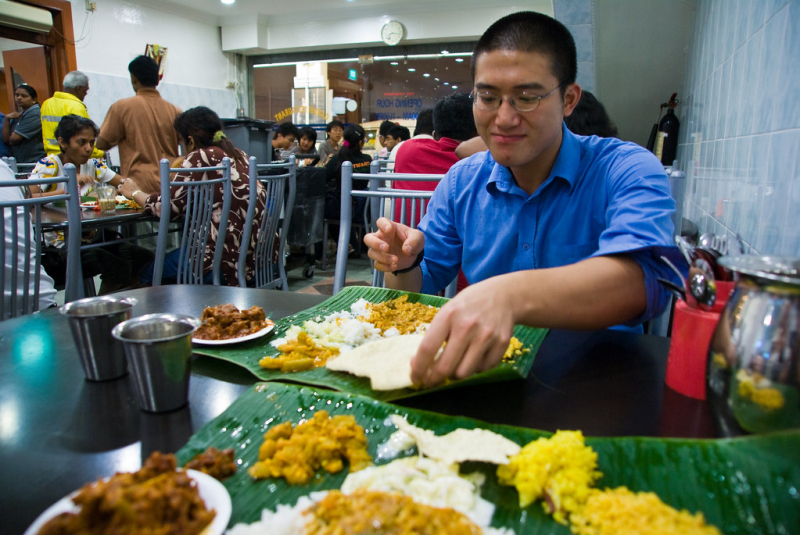
Photo on Flickr 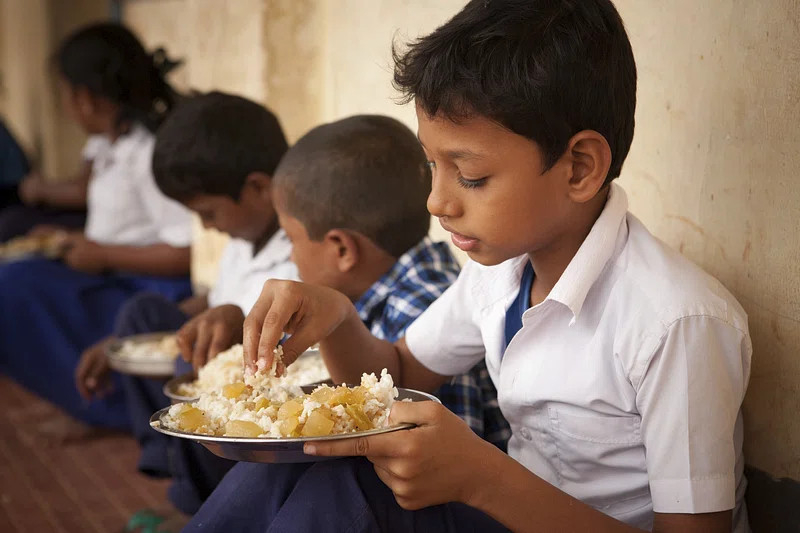
Photo on Rawpixel -
You are supposed to wash your hands before and after every meal, whether you use cutlery or not. Food safety and your general health are the two main benefits of this.
It's a prevalent myth that both Indian cuisine and street food are the result of unhygienic cooking practices and give people Delhi Belly. However, in truth, a lot of stomachaches are brought on by the bacteria on our own hands, which may be avoided by washing them properly.
Indian dining etiquette places a premium on hand hygiene, however wiping your right hand with a cloth or napkin is regarded as unclean. However, utilizing napkins is becoming more and more common in India's eating scene, much like using cutlery. The ideal practice for manners is still to wash your hands with soap and water both before and after each meal.

Photo on Pexels 
Photo on Flickr -
Most Indian meals are served family-style, which means that numerous main courses are ordered and everyone at the table shares. Rice, a flatbread, meat, vegetable, and lentil dishes, salad, yogurt, and pickled vegetables are traditional components of Indian family dinners. If you're only eating with two people, you can still order family-style, but you need order at least three courses, not including bread or rice.
Contamination, or jootha, is also an essential notion in Indian dining etiquette. Jootha can refer to food, utensils, or serving dishes that have come into touch with someone's mouth, saliva, or plate while they are eating. It can also refer to sharing anything, such as a cup, a spoon, or even leftovers. Although these behaviors may be considered intimate amongst partners or family members, they are often regarded as impolite and unsanitary among friends, coworkers, and acquaintances.
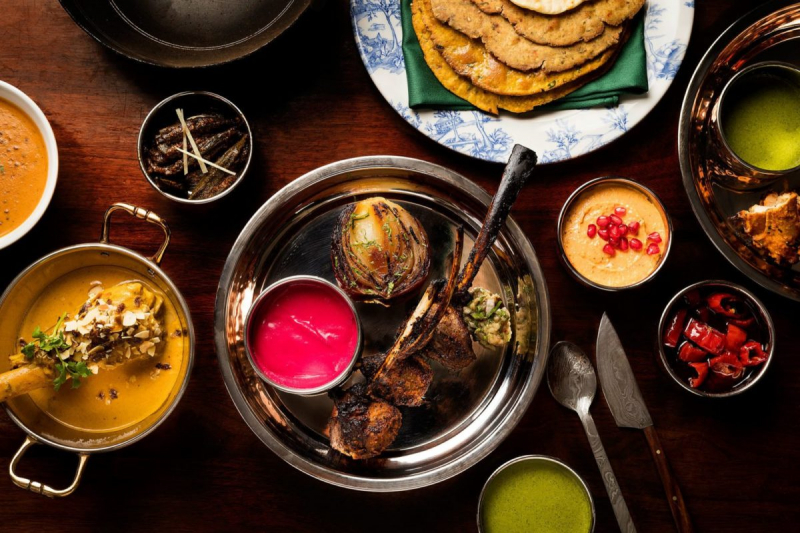
Photo on Roaming Pakistan 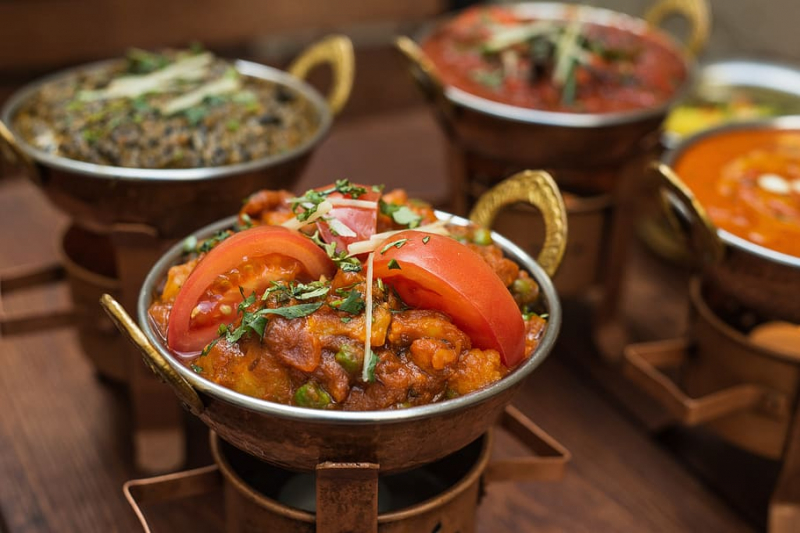
Photo on Pxfuel -
You don't have to sample every dish the host serves, but you should nonetheless eat everything on your plate out of respect for the cuisine, which is revered in Hinduism. Take only as much food as you can consume because of this.
The likelihood that you'll run upon a host who insisted you have a little bit more may make this challenging. A little bit more still. A little bit more still.
Many people in India will continue to offer food despite your complaints that you are actually too full to eat it because this is an important aspect of being a gracious host. It's acceptable to turn down your host's offers again and time again because you don't want to take too much and waste it.

Photo on FeelGoodPal 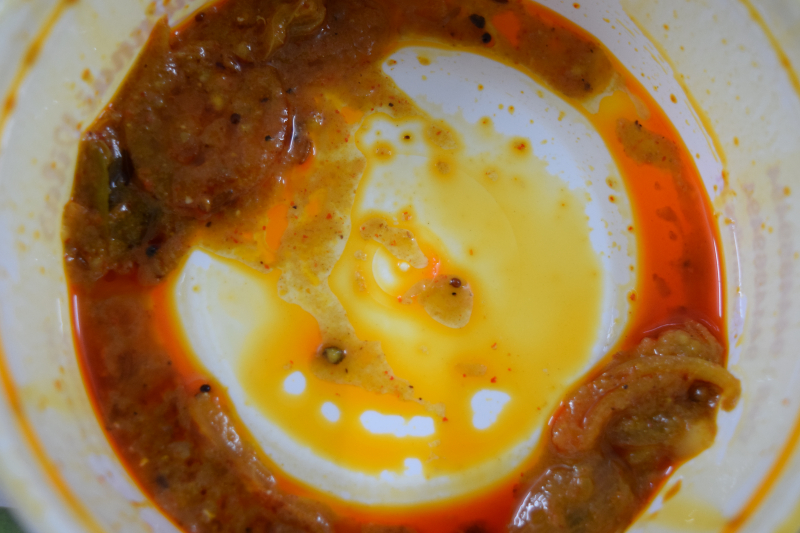
Photo on Wikimedia Commons -
Punctuality is extremely important to some westerners, especially when it comes to the guest-host relationship. In India, however, it is completely acceptable to arrive 15 to 20 minutes beyond the allotted time. In reality, if you come at the exact time specified in the invitation, you may surprise your host.
Arriving a little late is considered polite in India. This allows your host more time to finish preparing the cuisine. More than that, Indian hosts appreciate the gesture of inviting you; you may be astonished to learn that other guests who promised to come did not actually show up. This is not deemed disrespectful because the host's gesture of invitation and the guest's acknowledgement of the invitation are the most important factors.

Photo on Flickr 
Photo on NPR -
In India, there is an age-old proverb that goes, "Atithi devo bhav," which literally translates to "The Guest is God." It's possible that your host will try to get you to eat more and more until you are completely full. Insisting that you sample a dish or offering special dishes in excess is seen as a display of affection from your host toward you, the guest.
Keep in mind that it is not rude to decline an invitation, even if you are feeling somewhat overwhelmed and unable to say "no." In spite of the fact that Indian hostesses may come off as assertive, you can rest assured that they are incredibly accommodating and would comprehend if you do not want any more food.
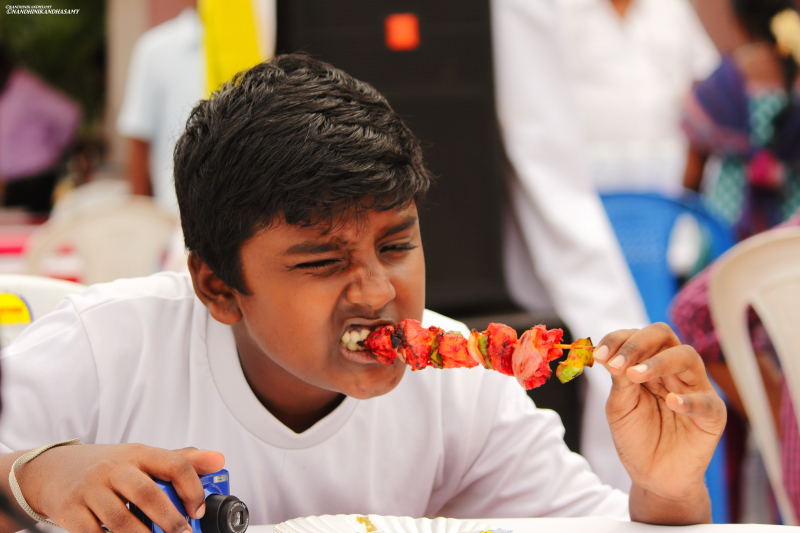
Photo on Wikimedia Commons 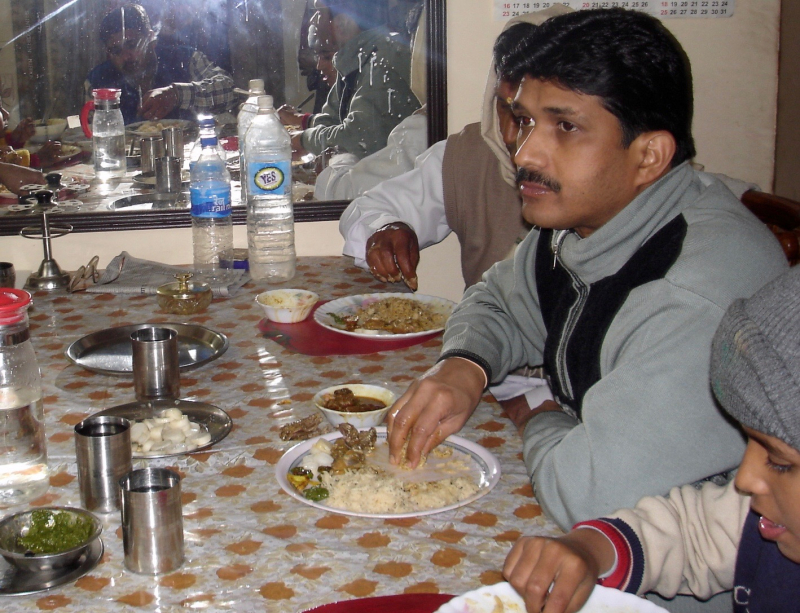
Photo on Wikimedia Commons -
Giving gifts when visiting a home is not required, but it is usually appreciated and is typically seen to be polite. It's usually a good idea to keep things like candy, flowers, or keepsakes in mind. A present for the kid is also a nice gesture if your host has kids.
But when you do give gifts, be careful. For instance, many Indian households do not keep alcohol in the house, despite the fact that it is customary in the West to bring a bottle of wine to dinner. A bottle of whiskey or wine should be OK if you observe that your host consumes alcohol and keeps it about the house.

Photo on Pexels 
Photo on Pexels -
You might also observe that in addition to bringing presents, some of the guests have invited additional people to join them for the supper. Bringing along more guests is frowned upon in Western culture since hosts often prefer to have an accurate headcount in order to prepare the appropriate amount of food. However, Indian hosts are warm and kind, and they like entertaining guests.
Dinners are often served in a family-style setting, so it is simple to make adjustments so that they can accommodate a different number of diners.
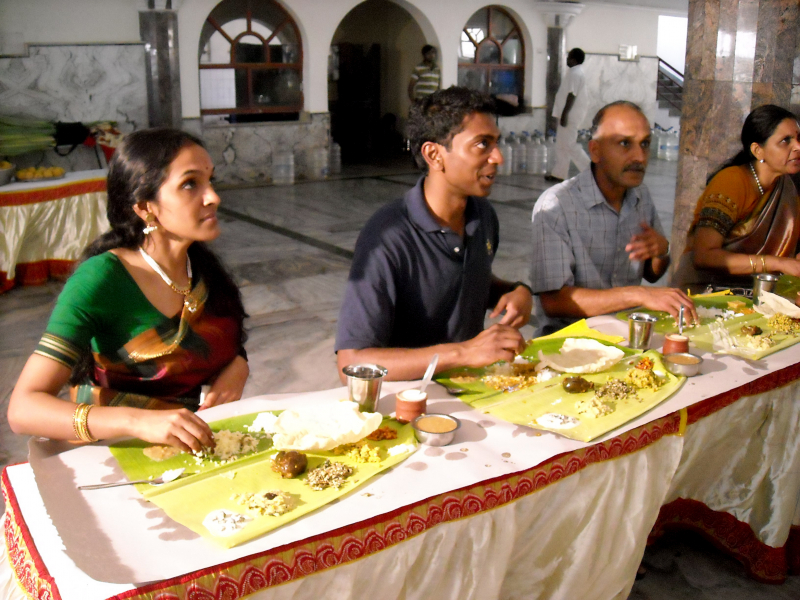
Photo on Wikimedia Commons 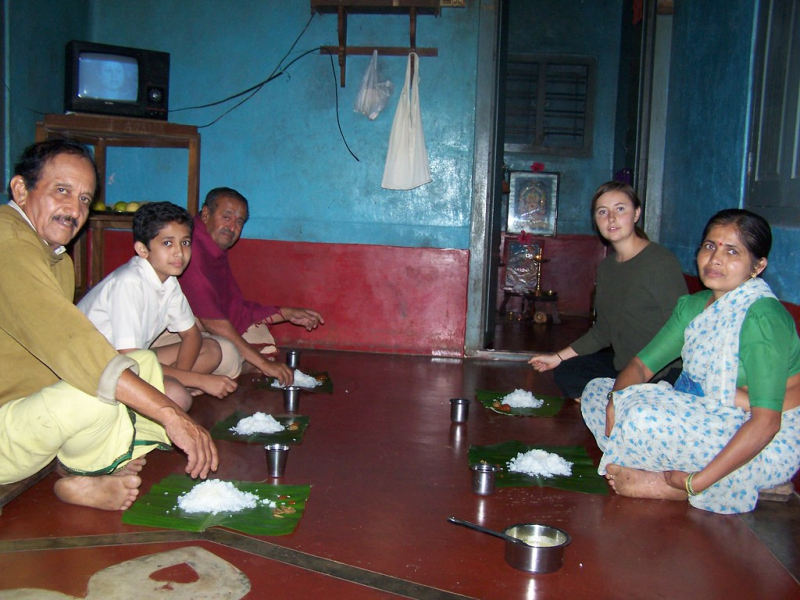
Photo on Flickr -
It is highly likely that you will be welcomed to stay for a meal even if you simply pay them a visit. The majority of Indians are quite kind and enjoy entertaining. Asking someone to join you for a meal is a display of respect and regard.
When you are asked to a coworker's home for a formal supper, you will be shown to your seat, given a namaste, and welcomed inside. You must take off your shoes and leave them outside the house before entering. This is regarded as being considerate to the host's residence as well.
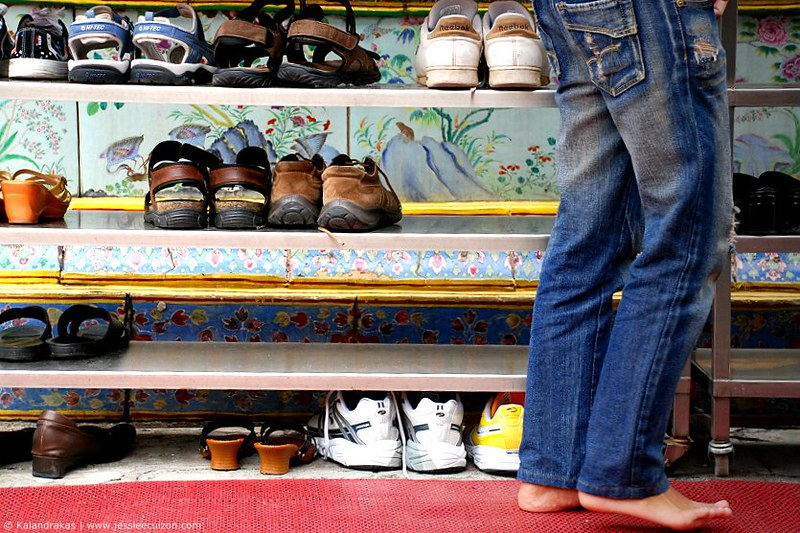
Photo on Flickr 
Photo on PIXNIO -
If you have already finished your meal, you are required to remain seated at the table until the host or the person who is the eldest at the table has finished their meal. It is considered poor manners to rise from the table while the rest of the people there are still chewing their food.
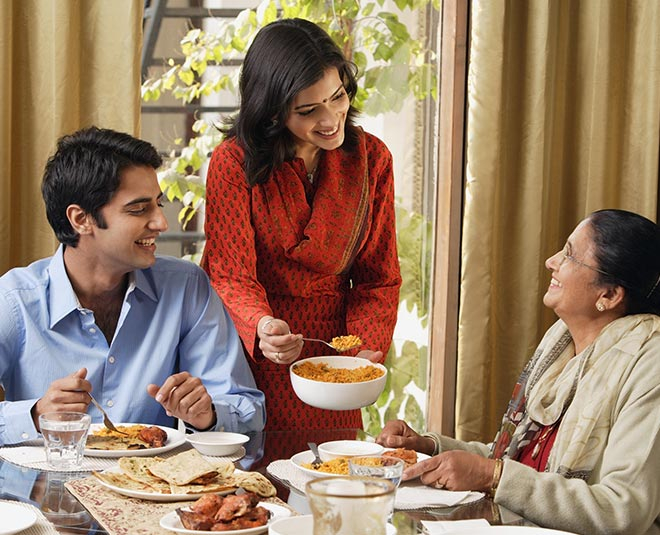
Photo on HerZindagi 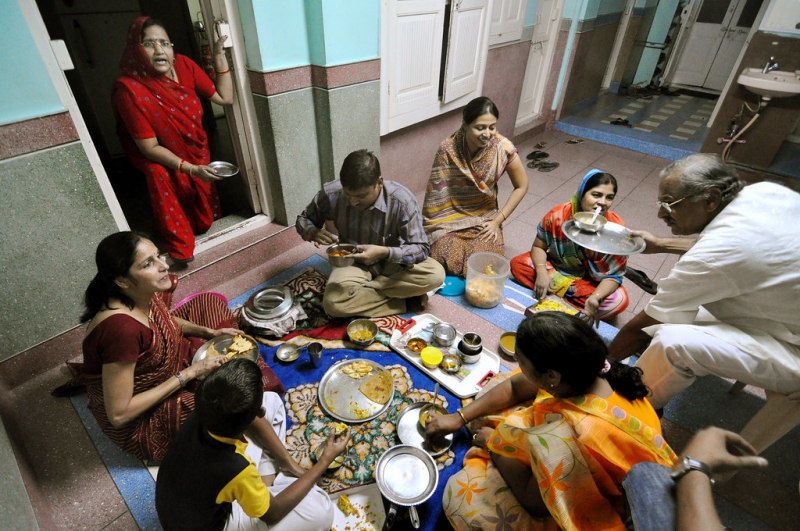
Photo on Flickr -
You might have read in your early etiquette research that using your left hand while eating is strictly forbidden. Don't worry if this has made you a little uncertain or perplexed. We'll delve into the origins of this particular practice and some of its variants.
In India, eating with the left hand has always been regarded as impolite and unsanitary. Use your right hand to pick up and eat food since the left hand is typically regarded as being "unclean." It's customary to keep your left hand at your side, avoid using it to touch the table, and avoid passing food with it.
Although it is customary and strongly advised, eating with the right hand is not required. Many Indians eat today with their two hands, and some even include utensils in their meals. In India, the acceptance and regularity of these customs varies by location, although forks and knives are frequently used for eating by the middle and upper classes, who don't give much thought to utilizing their left hand.
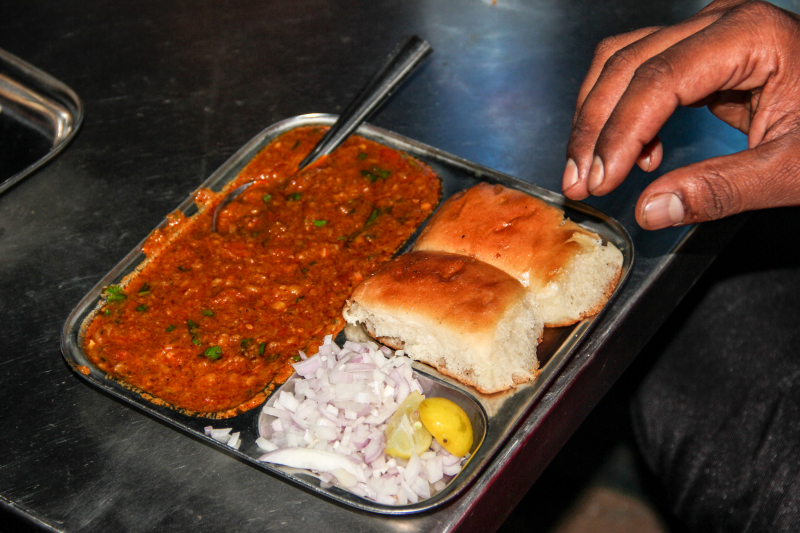
Photo on Wikimedia Commons 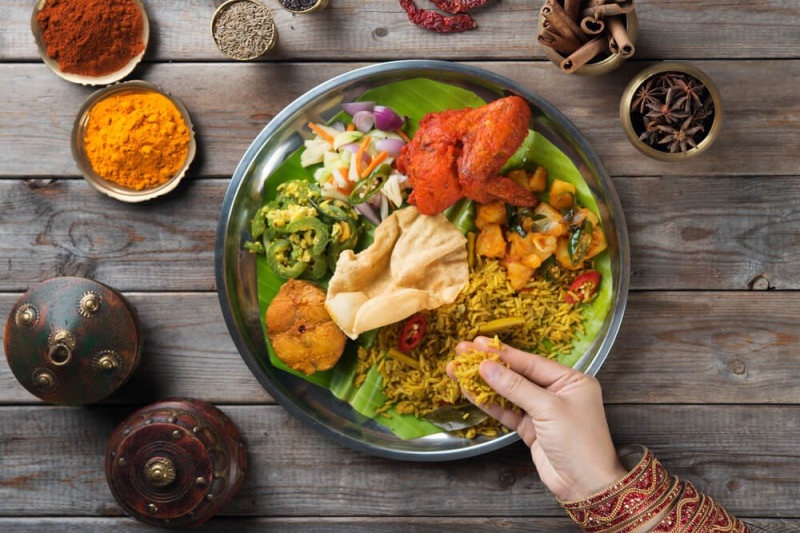
Photo on Little India -
Food sharing is highly valued in Indian culture. It is usual to share your meal with your companion if you are dining with them at an Indian restaurant and both of you order different meals.
However, remember to only share from the serving bowl or dish and not from your plate. Similarly, it is considered impolite to eat off of someone else's plate.
Additionally, it is thought to be extremely unhygienic to dip your used spoon and fork into someone else's food or the primary serving dish.
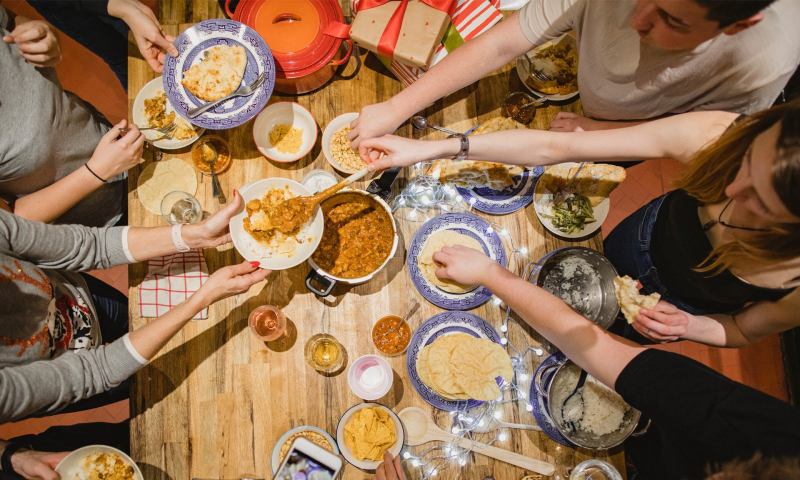
Photo on Which.co.uk 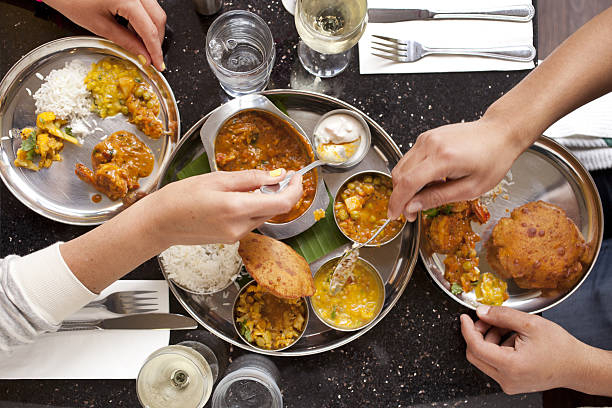
Photo on iStock

















